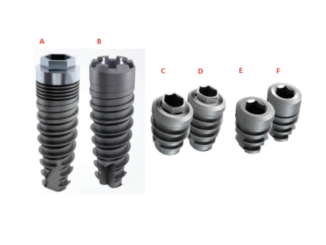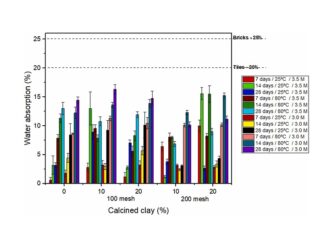
Effect of Zr content on the physicochemical, electrochemical, and biological properties of Ti80Nb20-based alloys
Abstract: The β-Ti alloys have become very attractive in the area of biomedical materials due to their corrosion resistance, biocompatibility, and low elastic modulus as compared with other materials. In this context, the Ti-Nb-Zr ternary system has gained more interest because Zr acts as secondary β-Ti stabilizing element when it is added together with β-stabilizing element such as Nb or Mo. According to the d-electron theory, the higher the Zr content, the lower elastic modulus values are obtained, which would allow to produce alloys with low elastic modulus, corrosion resistance, and shape memory. However, determining the ideal amount of Zr in a Ti-Nb-Zr alloy is still a matter of investigation. In this work, alloys with a nominal chemical composition of Ti80−x-Nb20-Zrx (x = 5, 10, 20, 30, and 40 at%) were produced by electric arc casting. The results show that the addition of Zr causes a decrease in both the elastic modulus and the hardness of the molten alloys, reaching values of 50.5 GPa for a sample with 40 at% Zr. The increase in the Zr content caused a microstructural difference between the phases, and the α” phase was detected for the Ti80Nb20, Ti75Nb20Zr5, and Ti60Nb20Zr20 alloys. The X-ray photoelectron spectroscopy (XPS) analysis revealed that the environment influences the Ti-Nb-Zr surfaces, showing the growth of oxide layers, mainly Ti, Zr and, to a lesser extent, Nb oxides. All alloys with different Zr amounts showed wide passivation regions and no sign of pitting in the potential range that is characteristic of the human body. The Ti-Nb-Zr alloys showed good compatibility in cell growth tests, with the best results for the 20 at% Zr alloy, and a decrease in biocompatibility for higher Zr amounts due to reactions of Zr4+ with body fluids.
Author(s): Gonzalez, E. D.; Gil, L. V. G.; Kugelmeier, C. L.; Amigo-Borras, V.; Mastelaro, V. R.; Rovere, C. A. D.; Nascente, P. A. P.
Materials Today Communications
Published: August 2022, Volume 32, 104069
DOI: https://doi.org/10.1016/j.mtcomm.2022.104069
CDMF
The CDMF, hosted at the Federal University of São Carlos (UFSCar), is one of the Research, Innovation and Dissemination Centers (RIDC) supported by the São Paulo State Research Support Foundation (Fapesp), and also receives investment from the National Council Scientific and Technological Development (CNPq), from the National Institute of Science and Technology of Materials in Nanotechnology (INCTMN).




